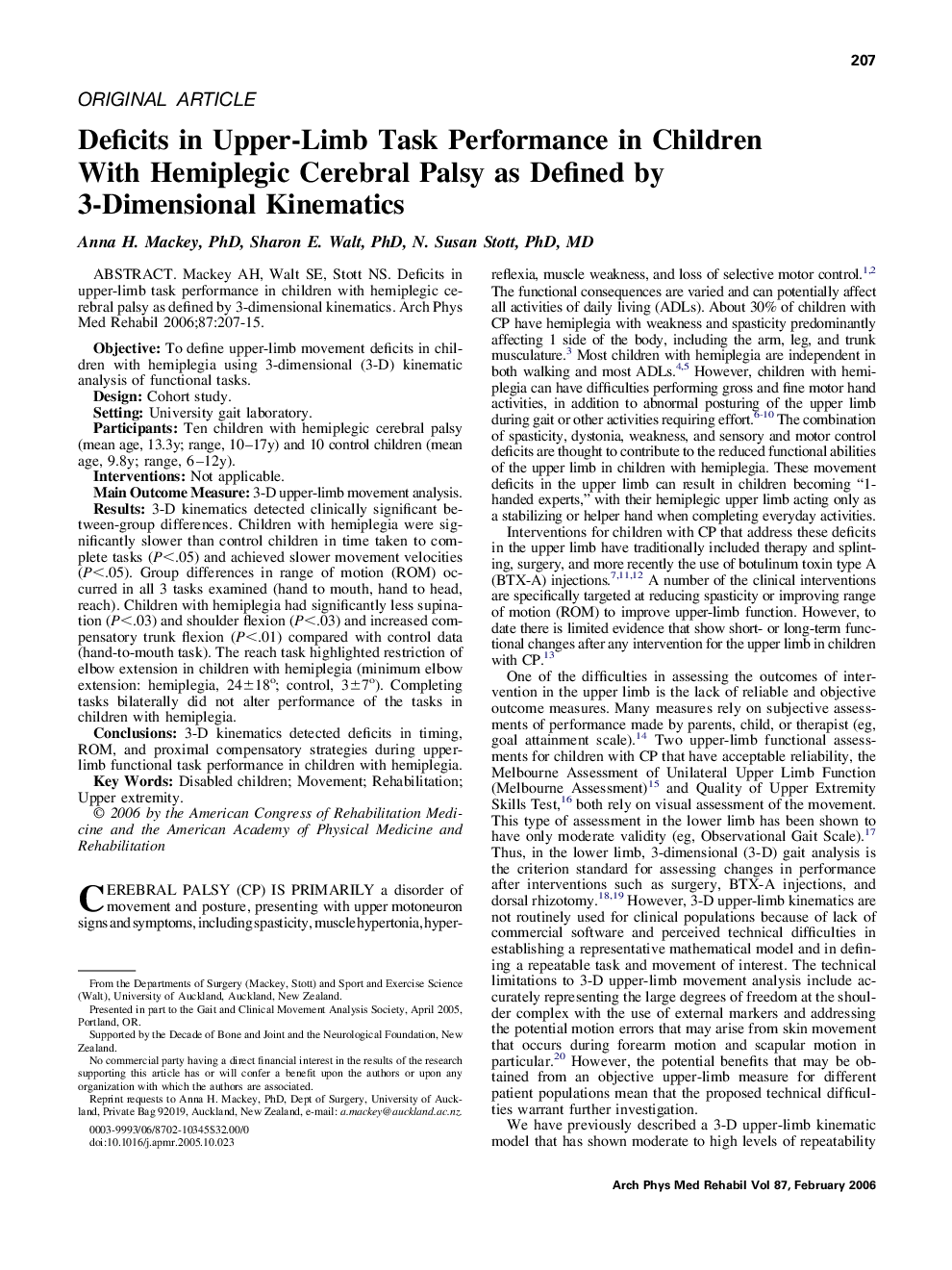| کد مقاله | کد نشریه | سال انتشار | مقاله انگلیسی | نسخه تمام متن |
|---|---|---|---|---|
| 3452577 | 1595811 | 2006 | 9 صفحه PDF | دانلود رایگان |

Mackey AH, Walt SE, Stott NS. Deficits in upper-limb task performance in children with hemiplegic cerebral palsy as defined by 3-dimensional kinematics.ObjectiveTo define upper-limb movement deficits in children with hemiplegia using 3-dimensional (3-D) kinematic analysis of functional tasks.DesignCohort study.SettingUniversity gait laboratory.ParticipantsTen children with hemiplegic cerebral palsy (mean age, 13.3y; range, 10–17y) and 10 control children (mean age, 9.8y; range, 6–12y).InterventionsNot applicable.Main Outcome Measure3-D upper-limb movement analysis.Results3-D kinematics detected clinically significant between-group differences. Children with hemiplegia were significantly slower than control children in time taken to complete tasks (P<.05) and achieved slower movement velocities (P<.05). Group differences in range of motion (ROM) occurred in all 3 tasks examined (hand to mouth, hand to head, reach). Children with hemiplegia had significantly less supination (P<.03) and shoulder flexion (P<.03) and increased compensatory trunk flexion (P<.01) compared with control data (hand-to-mouth task). The reach task highlighted restriction of elbow extension in children with hemiplegia (minimum elbow extension: hemiplegia, 24±18°; control, 3±7°). Completing tasks bilaterally did not alter performance of the tasks in children with hemiplegia.Conclusions3-D kinematics detected deficits in timing, ROM, and proximal compensatory strategies during upper-limb functional task performance in children with hemiplegia.
Journal: Archives of Physical Medicine and Rehabilitation - Volume 87, Issue 2, February 2006, Pages 207–215